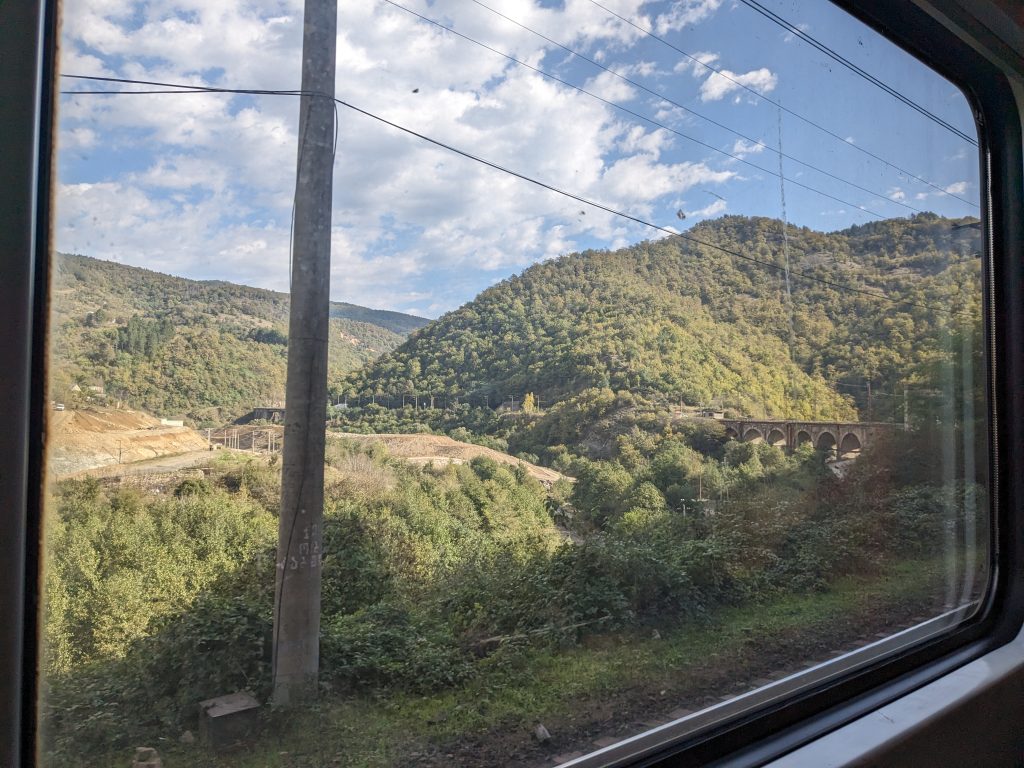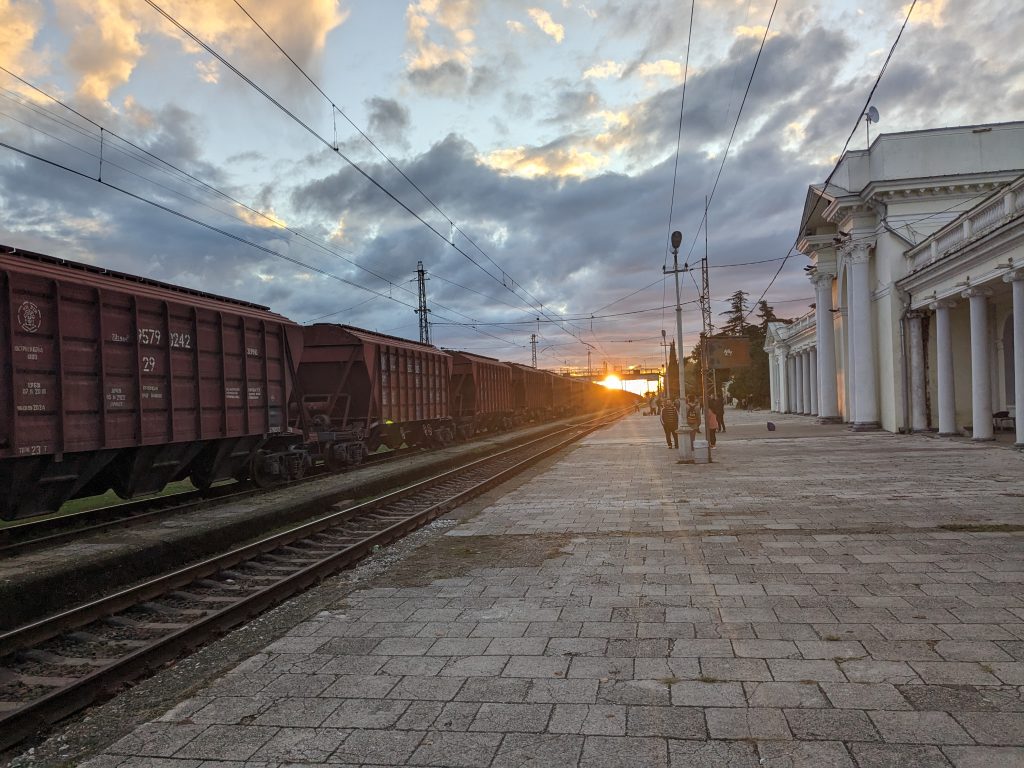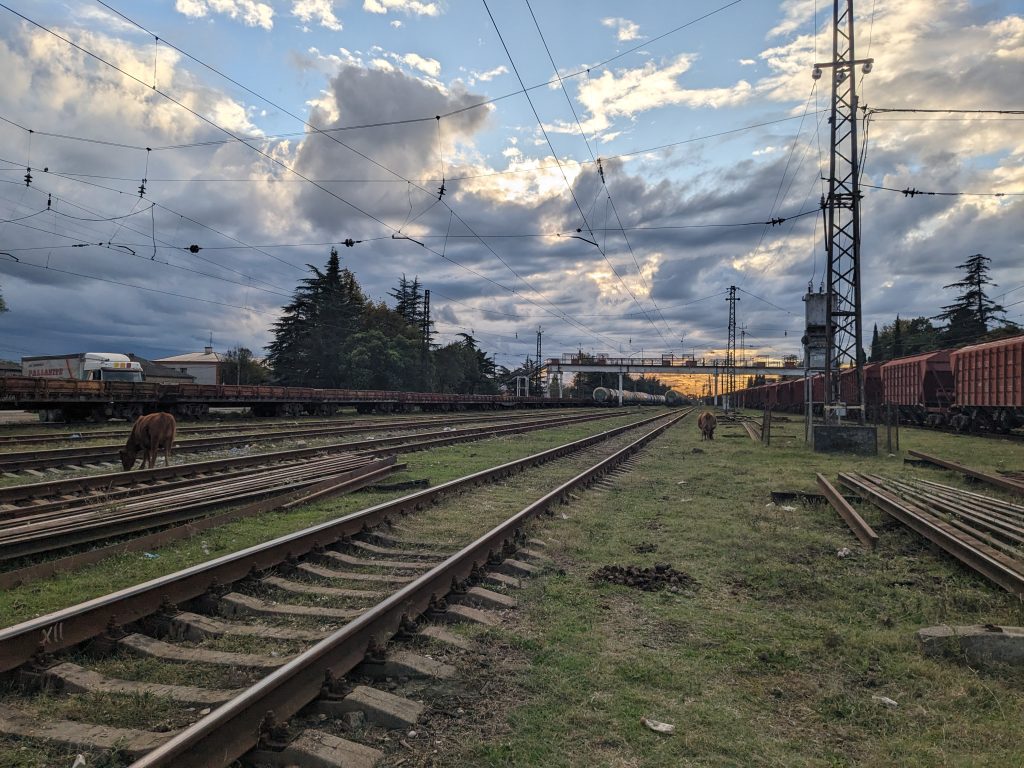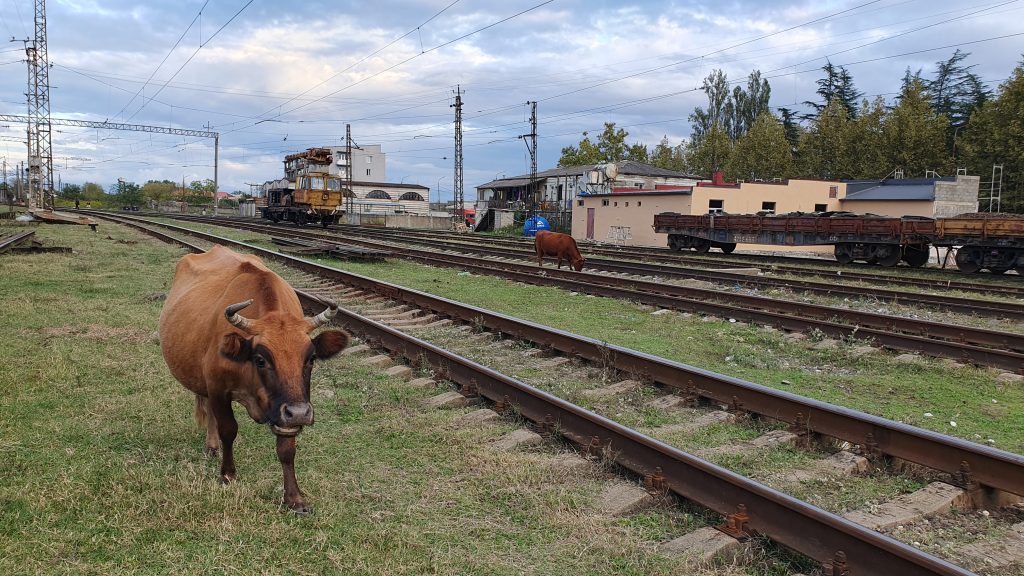Contents
This wiki page is based on a 1 week trip to Georgia in early October 2023. It therefore may not be as upto date as other pages and does not have the same level of local knowledge as other pages. Do let us know if anything has changed!
An interrail pass is not valid in Georgia. Standard tickets are cheap. Though the bus is the main mode of intercity travel.
Checking times
The Georgian Railways Website has a summary of long distance trains currently running at: https://www.railway.ge/en/traffic-general-schedule/ – this can be a little confusing to read. But take for example this line:
| # | Train # | Destination | Departure | Arrival | Departure | Arrival | Note |
| 2 | 12/11 | Tbilisi-Ozurgeti | 08:45 | 17:24 | 08:55 | 17:17 | Daily |
This means that:
Train number 12 leaves Tbilisi at 08:45 traveling to Ozurgeti with an arrival time at 17:24. And that train number 11 leves Ozurgeti at 08:55 to Tbilisi with an arrival time of 17:17. And both run daily.
This page does not show regional trains (what few there are) nor intermediate stations.
To check the times of trains at intermediate station you can use the journey planner at: https://www.railway.ge/en/regional-trains/# – this can be fiddly to use – it will only show direct trains. If you need to change you will need to work out where yourself and search for each leg separately. The selector for morning or afternoon is complete garbage with trains often showing up on the other option.
There is a seperate journey planner on the ticket page mentioned below. This can sometimes be easier to use but does not show regional trains.
It is a little out of date now but: https://discovergeorgiablog.wordpress.com/2019/07/30/georgian-railways-summer-schedule-2019/ is an excellent map giving an idea of where trains typically operate. In particular the lines to Tkibuli & Tskaltubo no longer operate. Nor does the Borjomi to Bakuriani service. Other lines are also less frequent.
Buying a ticket
You can purchase tickets online using the Georgian Railways website at: https://ticket.railway.ge/Home/indexa. Ticket sales go on sales 20 days prior to departure and during peak travel periods – particularly on the route to/from Batumi trains sell out not long after going on sale. My experience in October was I had no issue getting a ticket the evening before departure for every train I wanted. Though in some cases this required our group to sit separately around the train or travel in first/business class as second class was full.
All long distance trains are reservation compulsory – you must have a ticket and reservation before boarding.
You can use your account to buy tickets for other people. But make sure to correctly enter names and passport numbers. This is enforced, more on it later. You will receive tickets and reservation as a email and can show these digitally on your phone.
All long distance stations have ticket offices which are staffed long hours – even when trains are infrequent.
Kiosks can be found on nearly every street corner in cities which can perform countless day to day functions. Including the purchase of train tickets. They usually had an English option and worked the same way as the website.
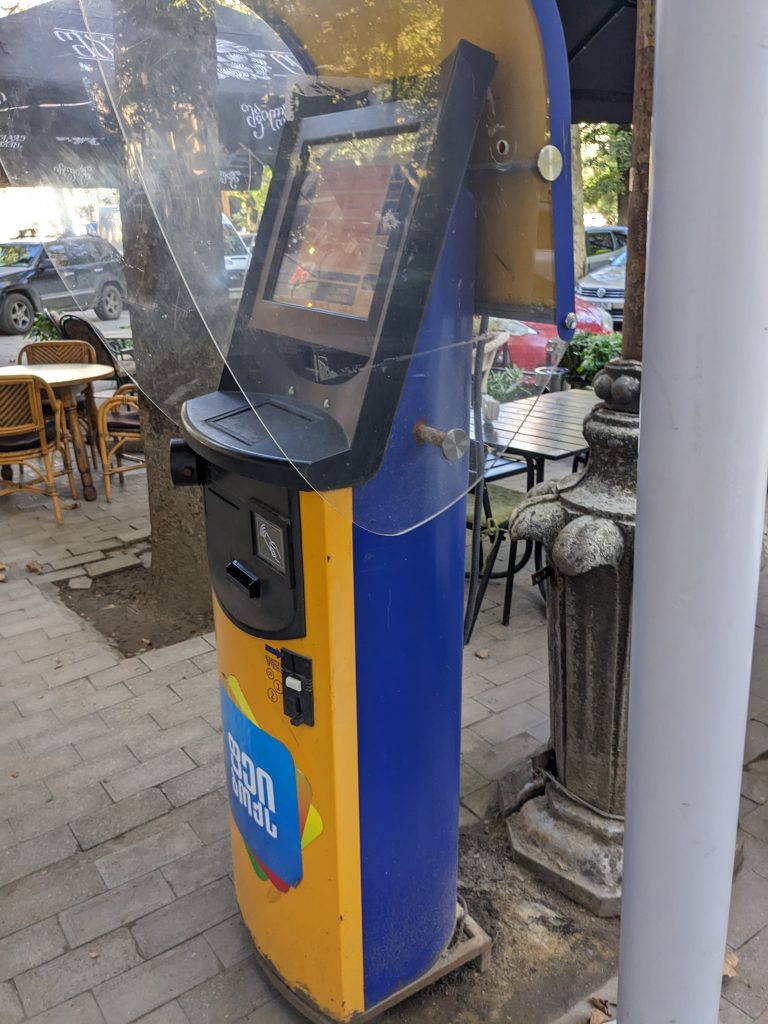
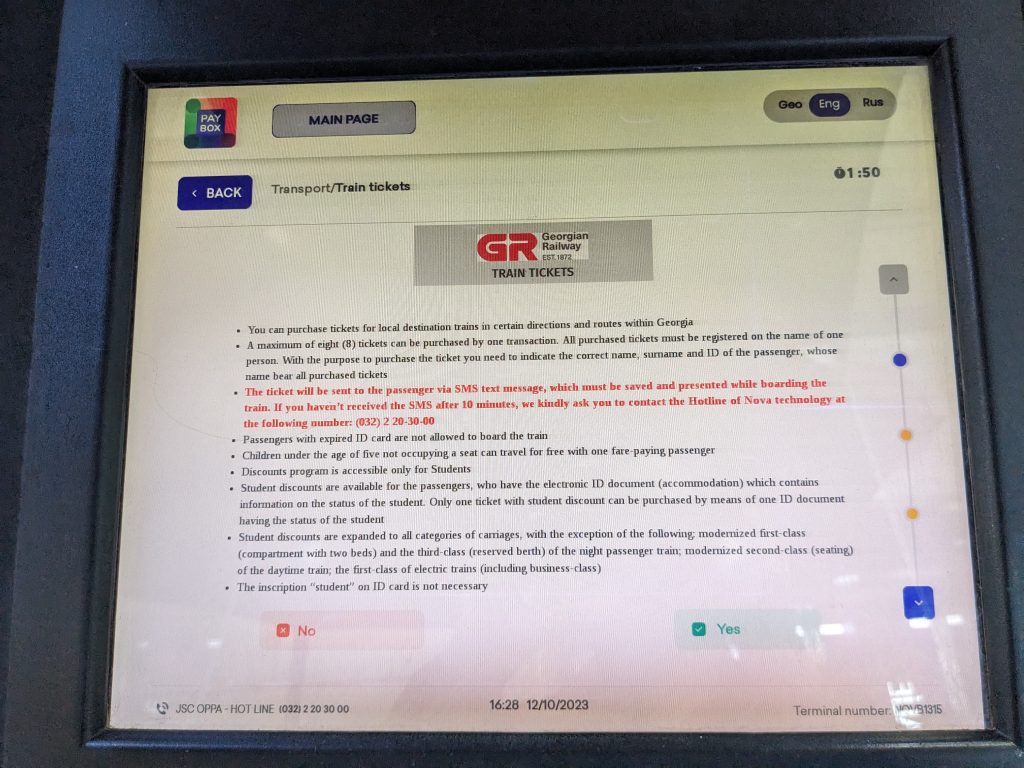
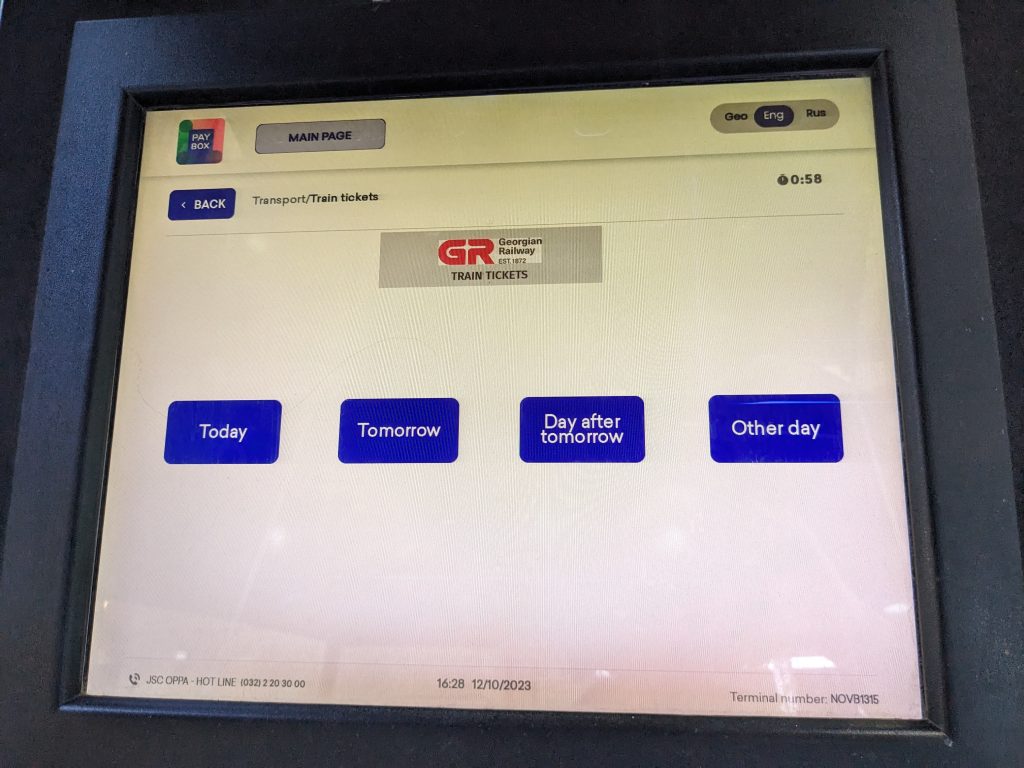
What are the trains actually like?
Georgian Railways maintains a surprisingly detailed classification system considering how few trains there are.
International trains
Currently the only such route is Tbilisi – Yerevan
Stadler-kiss
These are the highest class of trains within Georgia and are operated using new double decker trains built in Switzerland. They operate on the Tbilisi – Batumi route. In second class they feature pretty hard 2+3 layout and have onboard information screens and announcements in both Georgian and English.
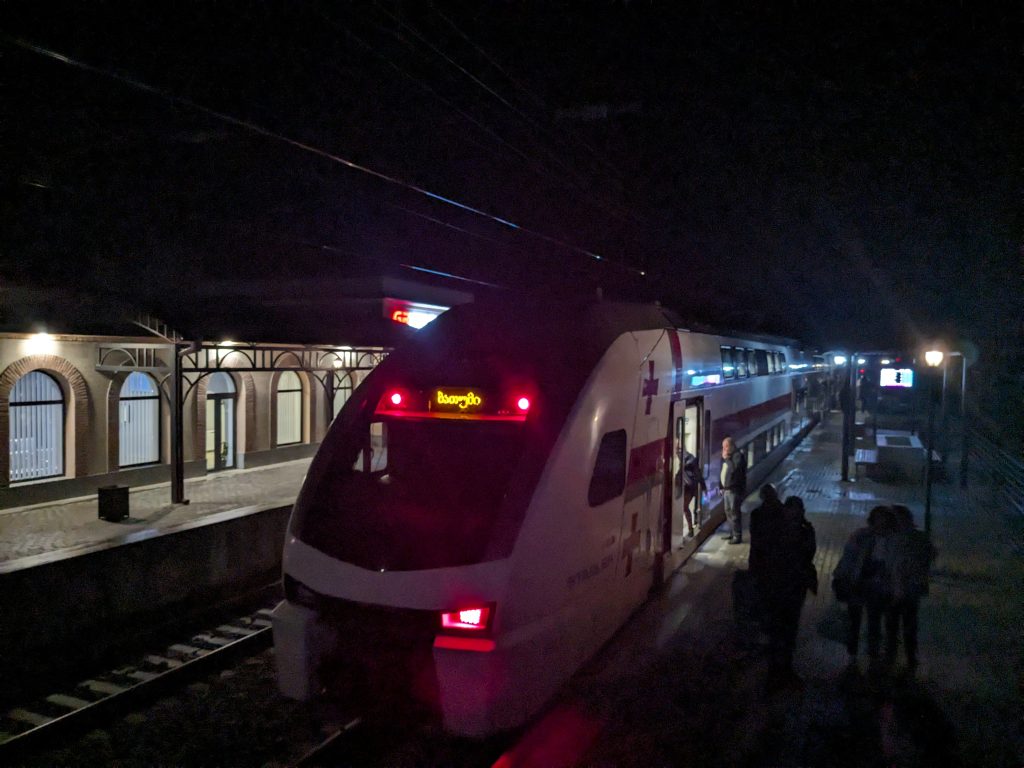
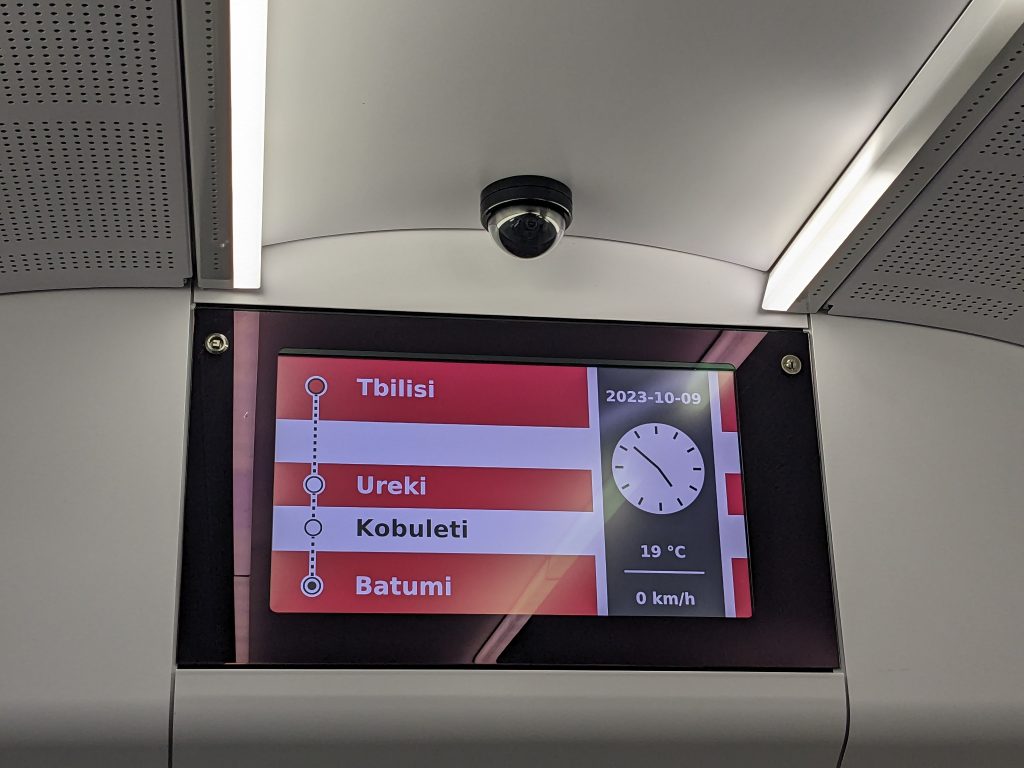
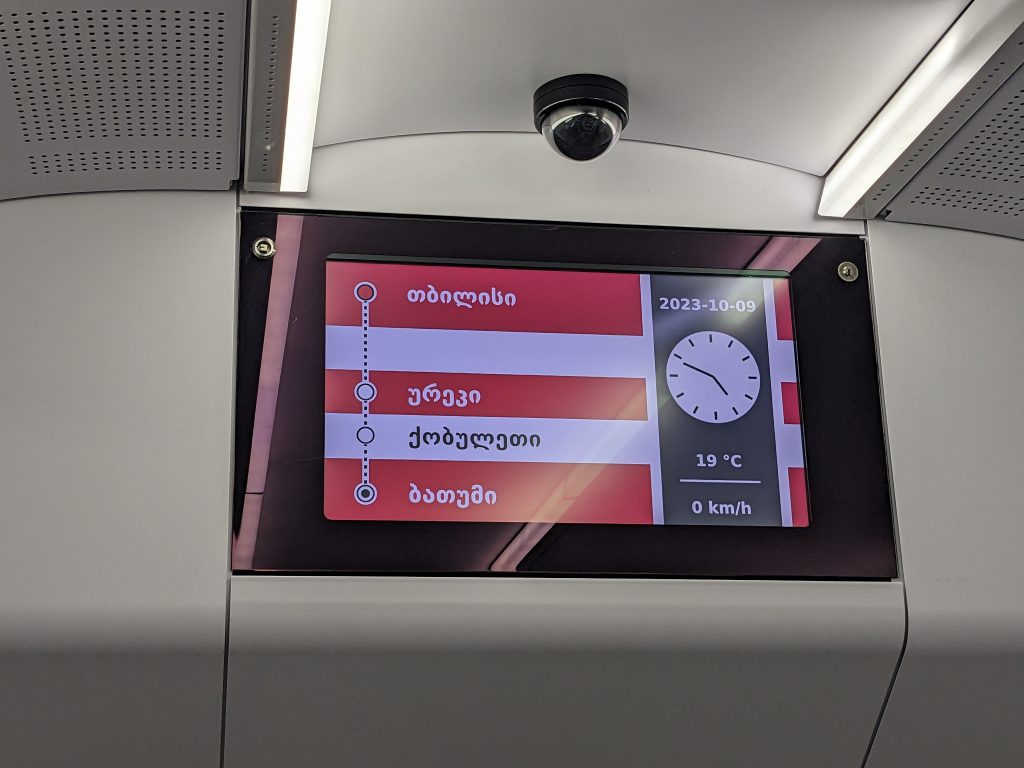
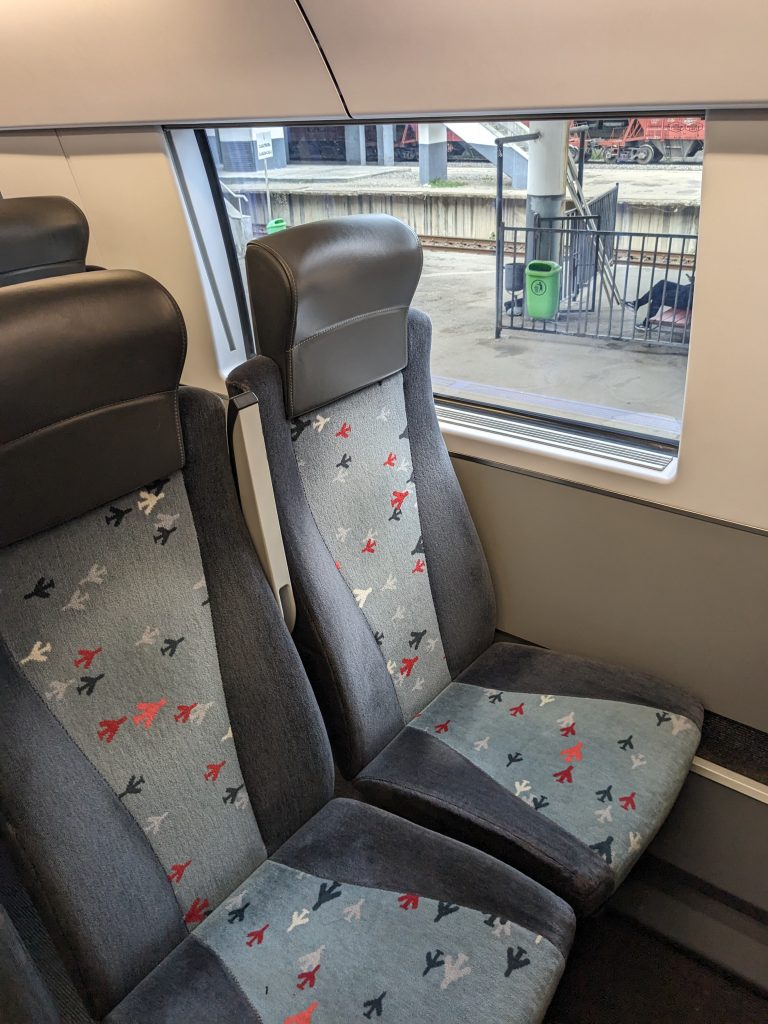
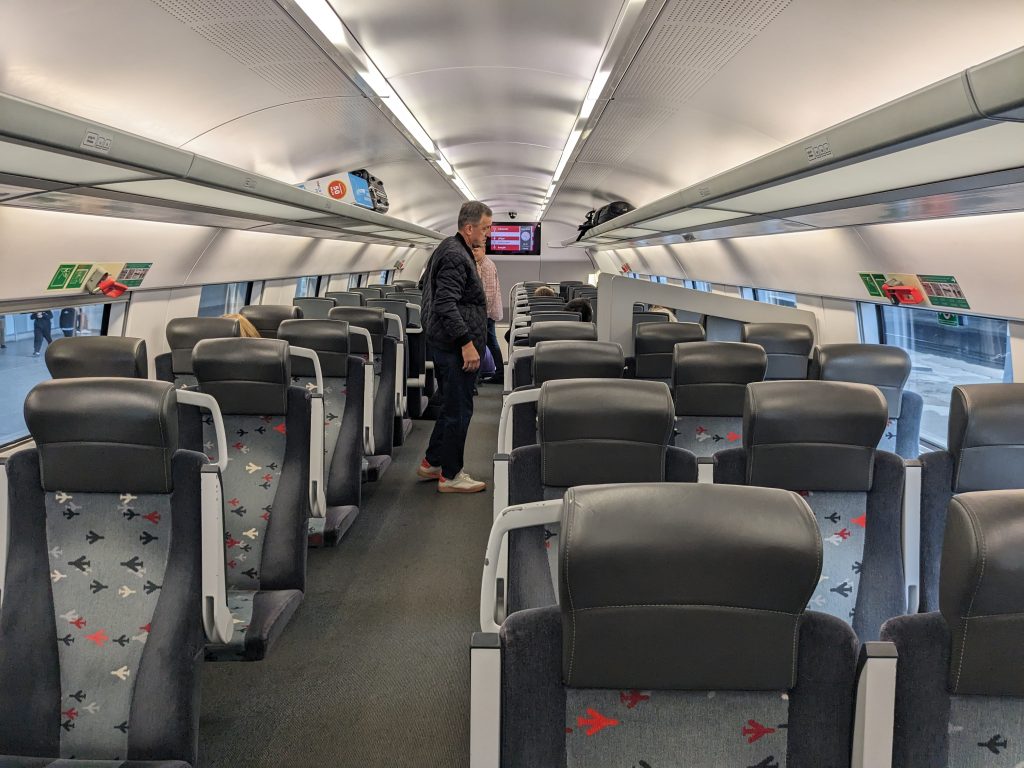
The airplane design is because these trains were originally intended to operate the Moscow airport train. When the value of the Russian Ruble feel after Russia invasion of Crimea the train company who ordered them was unable to complete payment. So some ended up in Georgia.
There is an onboard vending machine but no other catering onboard. These trains are what is used on the domestic overnight service between Tbilisi and Batumi (train numbers 812/811)
Fast trains
The next level down is a “Fast” train. These operate similarly distance services from Tbilisi to other smaller places in the west of the country. eg. Zugdidi and Poti. These trains make more stops en-route making them much more useful for intermediate journeys. Most trains are operated using exported Chinese high speed trains. Though trains 11, 12, 17 and 18 are still operated using ex-soviet locomotives and carriages. They also feature an onboard vending machine but no other catering. 2nd class is in a 3 + 2 layout. 1st and business class is in a 2 + 2 layout. Business class being a smaller cordoned off section of first class.
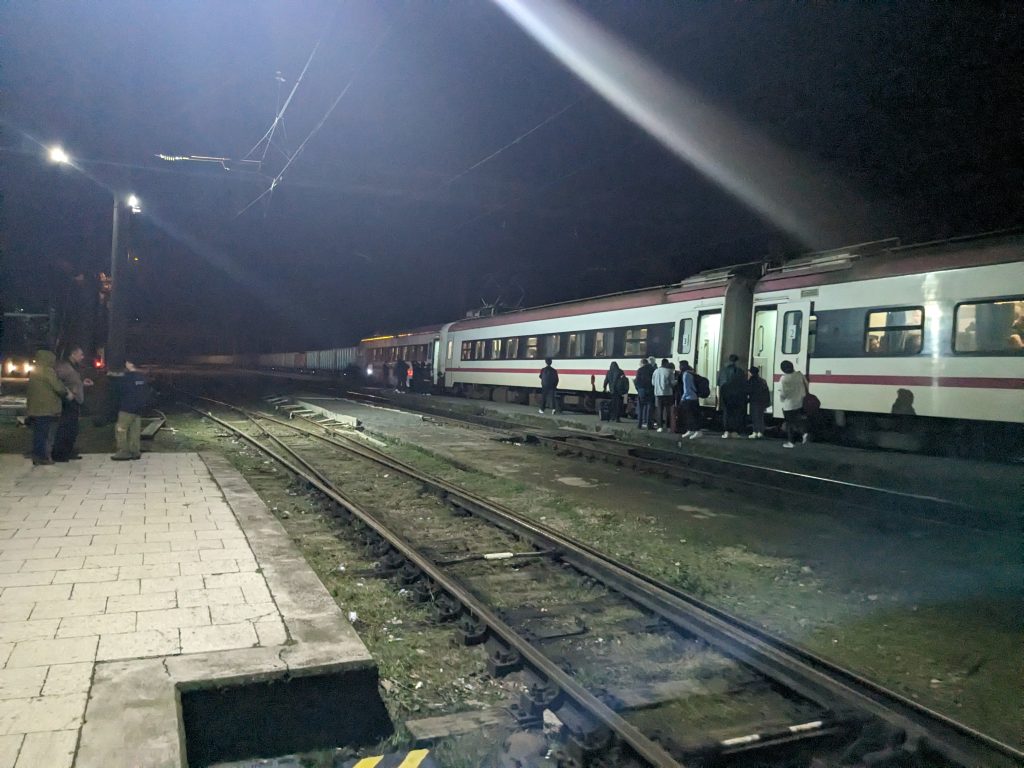
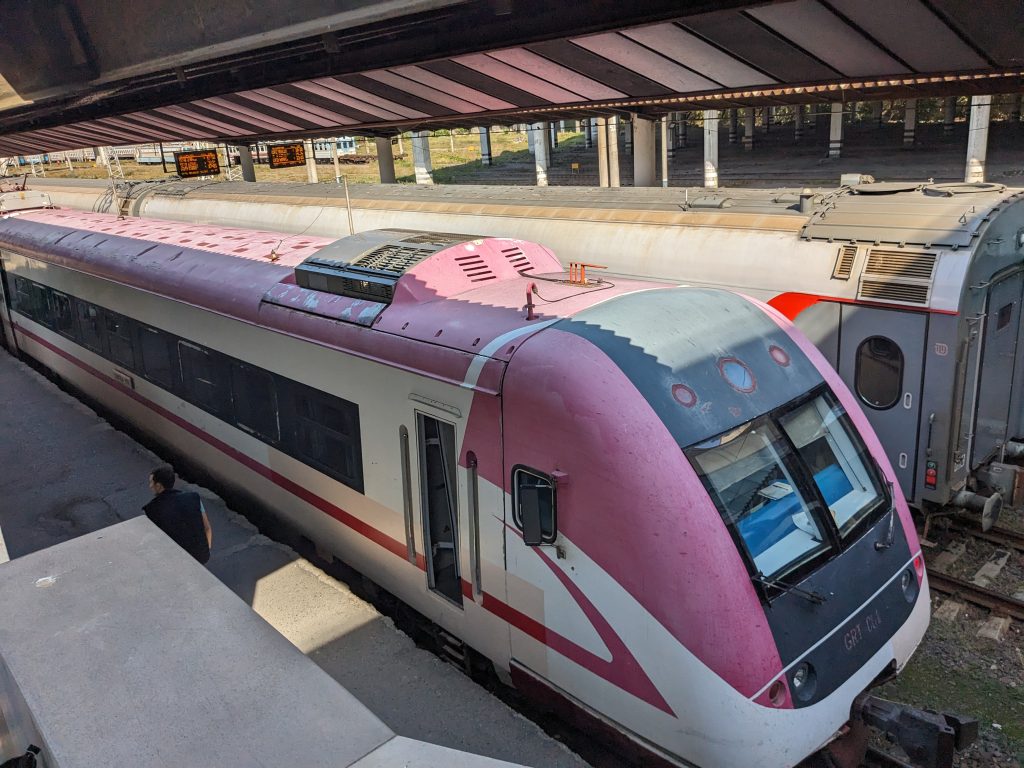
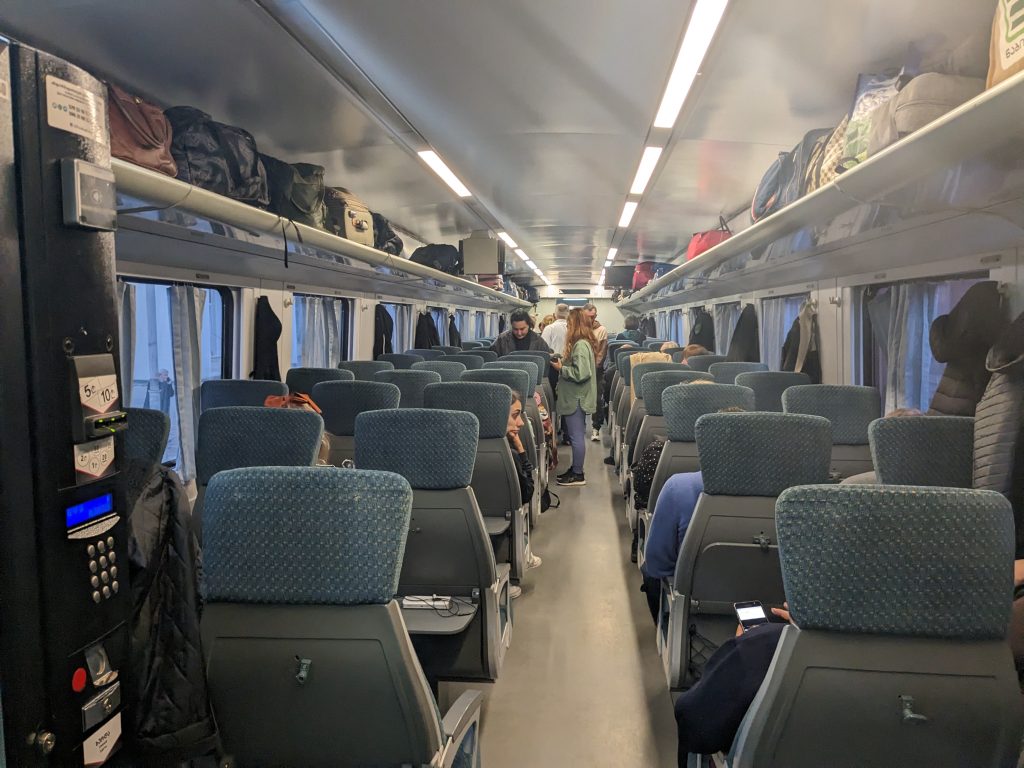
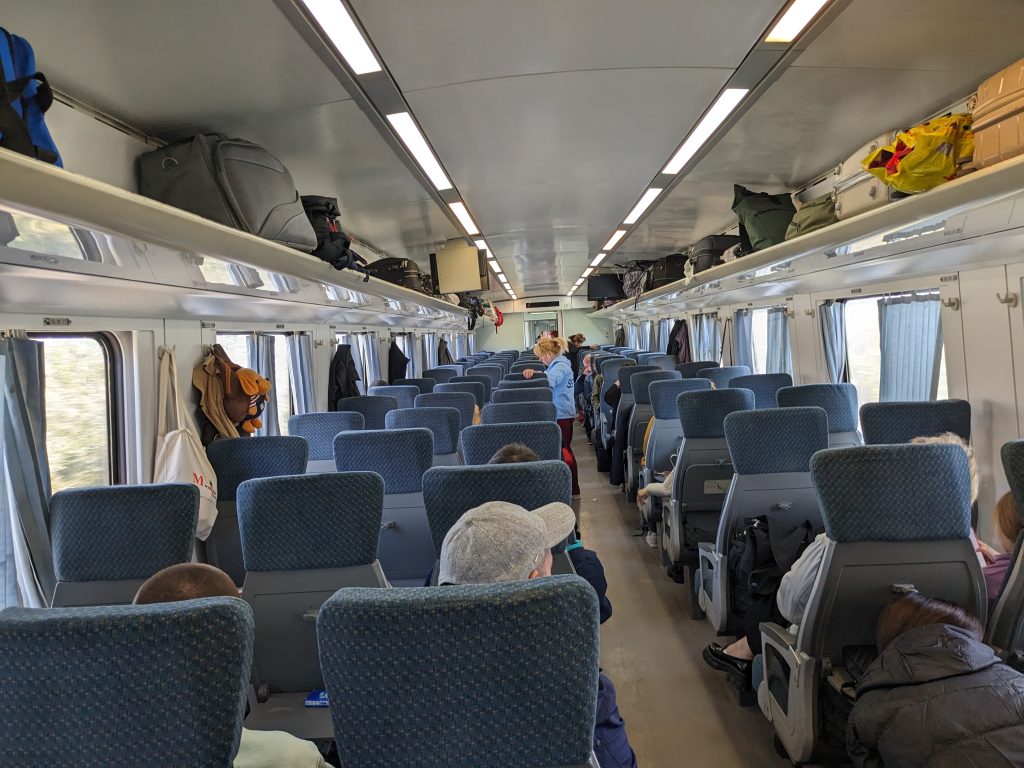
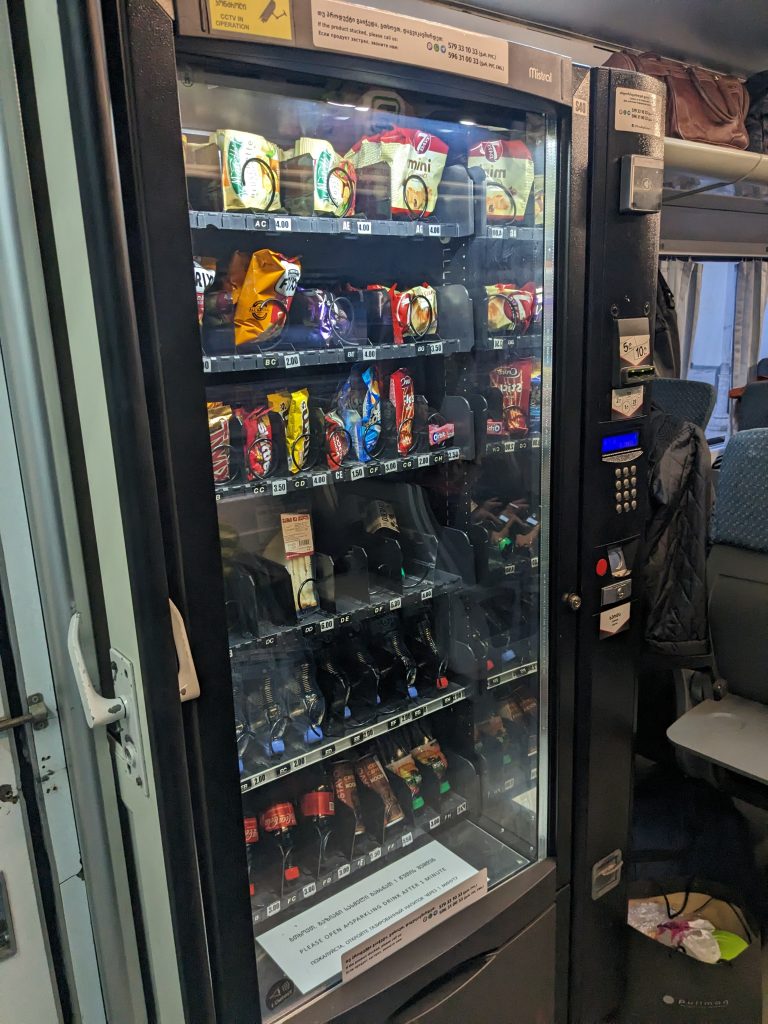
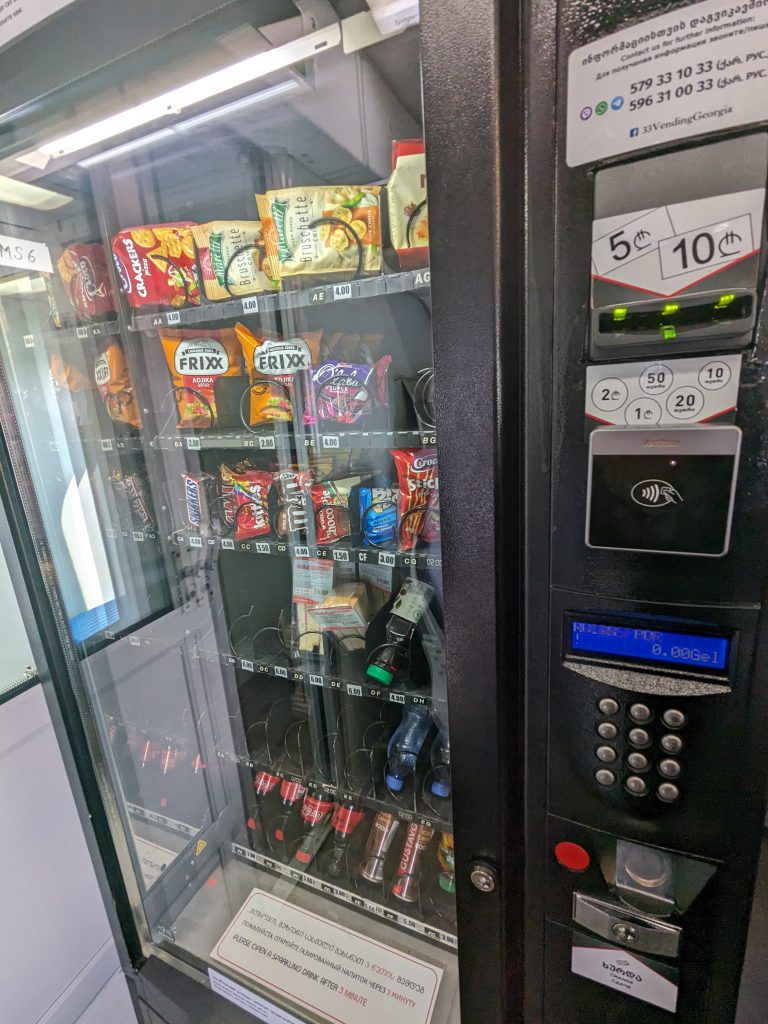
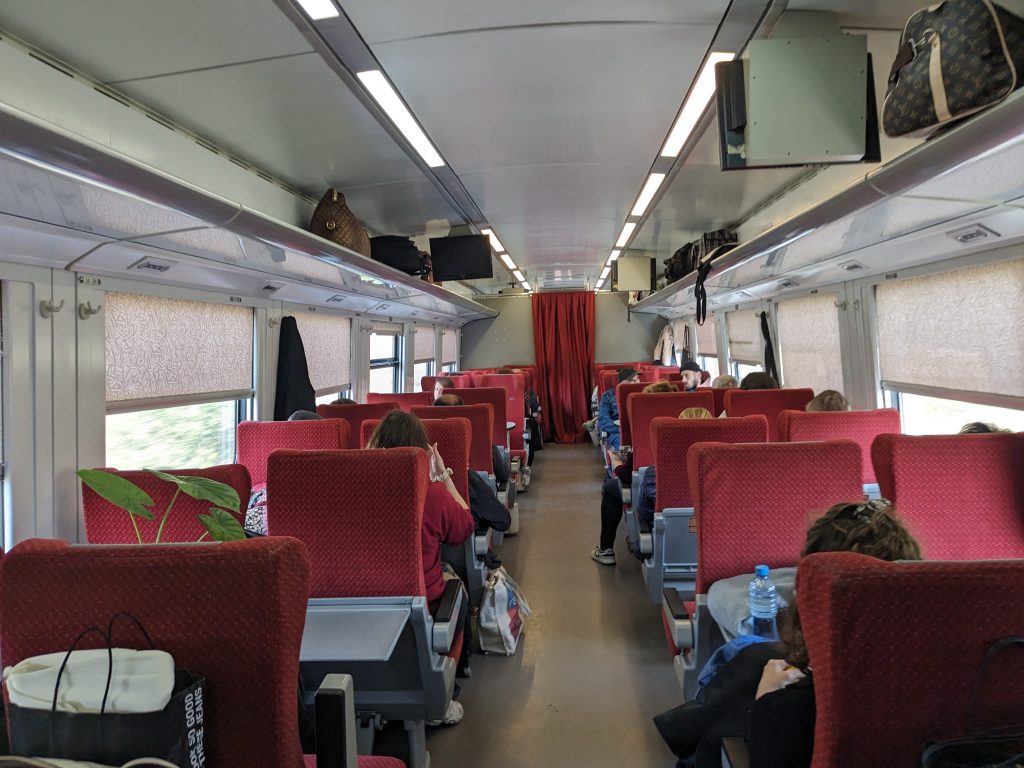
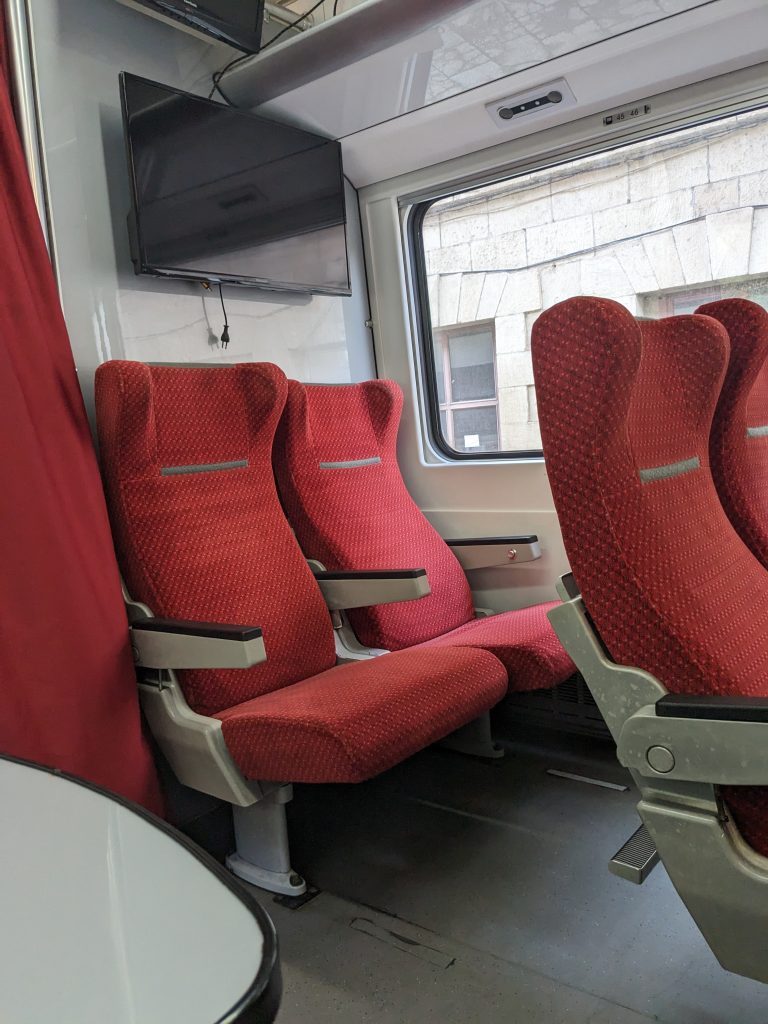
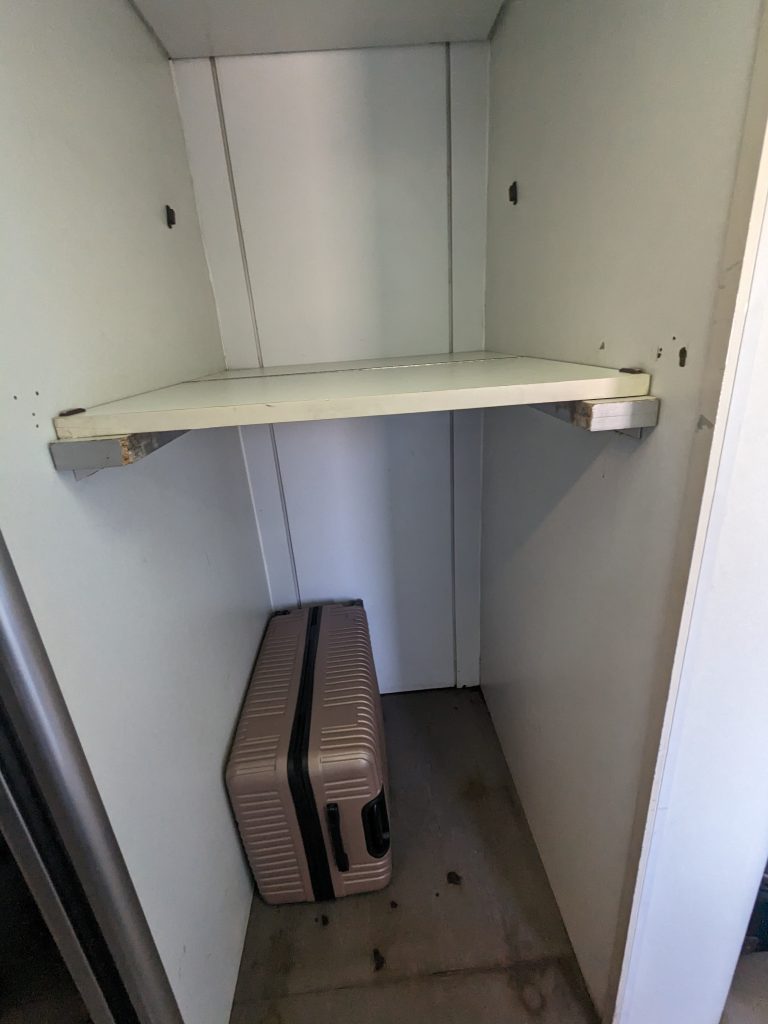

Passenger Electro-Trains & Commuter Electro-Trains
These are the next 2 levels down and generally operate shorter intercity journeys. They typically use ex-Soviet stock.
Regional/Suburban trains
For local transport
What is the actual process like of traveling by train?
The ticket
If you’ve bought a ticket as detailed earlier through the Georgian Railways website you will get an email like this:
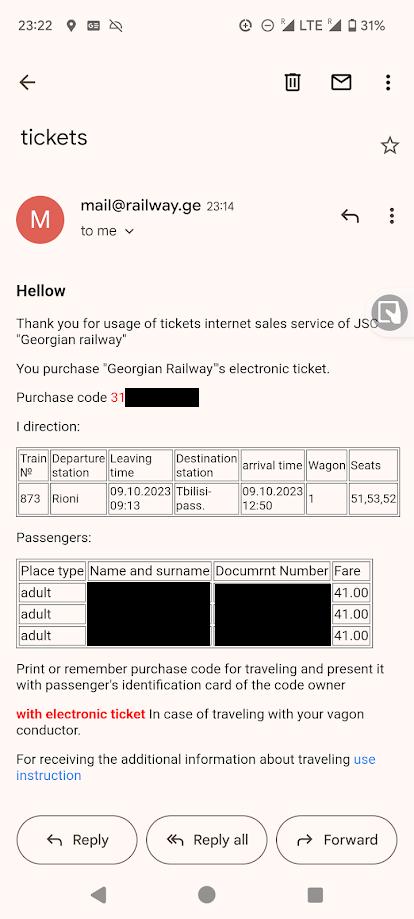
This is your ticket. Make certain that everyone bring their passport with document numbers. You do not need to print this and it can be shown on your phone. Though if multiple people are traveling it may be useful to forward it so everyone has a copy. There is no need to be at the station more than a few minutes before departure.
Finding the train/platform
You can find information screens dotted everywhere. These show information in Georgian and English but can be a bit confusing to read. These boards are not live and act more like an electronic timetable. They also show both arrivals and departures throughout the whole station. Not just the platform you are on. The boards also have multiple pages, these photos below are taken from the start of the cycle. But when you first look at a board first always check at the bottom where it says “AZRY”. Here we can see page 1 of 3 which is the next 4 trains in all directions.
The board starts like this:

(sorry its slightly hard to read). But the times on the left indicate the times at the start and end of the route. So we have a train leaving Batumi arriving at 1855 arriving at Kutaisi at 2314 on platform one. The times in blue are the times at this station. As this is Kutaisi station the train is due here at 2314 and will terminate.
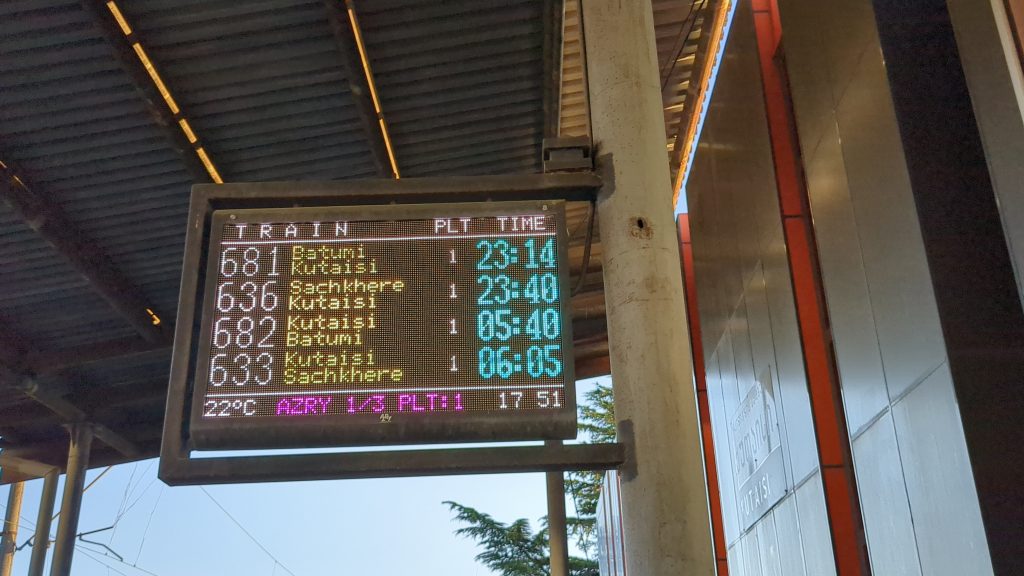
The start/end times of the train are then replaced with the train number. This 2 step process will then repeat in Georgian before switching to page 2 showing trains further in the future.
Here is a video showing the board going through the full loop:
Here is a different example of a board at an intermediate station. It is the more common type that uses the same design but is all one colour:
(The flicker is a camera effect). But here we can see that the next train to stop here (Senaki) left Zugdidi at 1725. It’s final stop will be Tbilisi at with an arrival time of 2316. And will stop here at 1826. This is train number 869.
There is no way to tell the intermediate calling points from these boards. Make sure to know the train number and terminus station you are looking for.
Boarding the train
A full ticket and document check is done before boarding the train. This can be chaotic. Staff members will be first off the train followed by people getting off. Those staff members will then check the tickets and passports of all passengers before allowing them onto the train. I had no issue using my UK passport. But you will not get on the train without ID. They did not actually seem to bothered about the ticket itself. These members of staff have a list of names and ID numbers of people in their carriage. They typically took ID first and if they matched did not look at the ticket.
You must therefore head to your assigned carriage and board there. Staff where fairly strict about ensure the right people where in their assigned seats. Sometimes a second ticket check was then done onboard at some point during the journey.
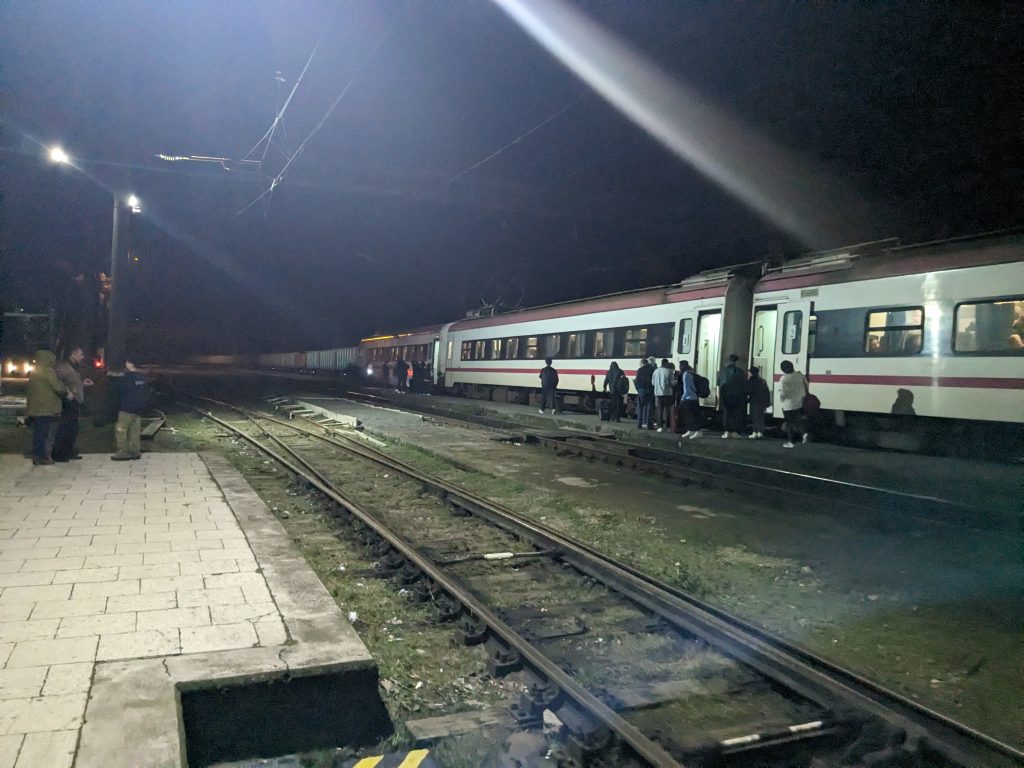
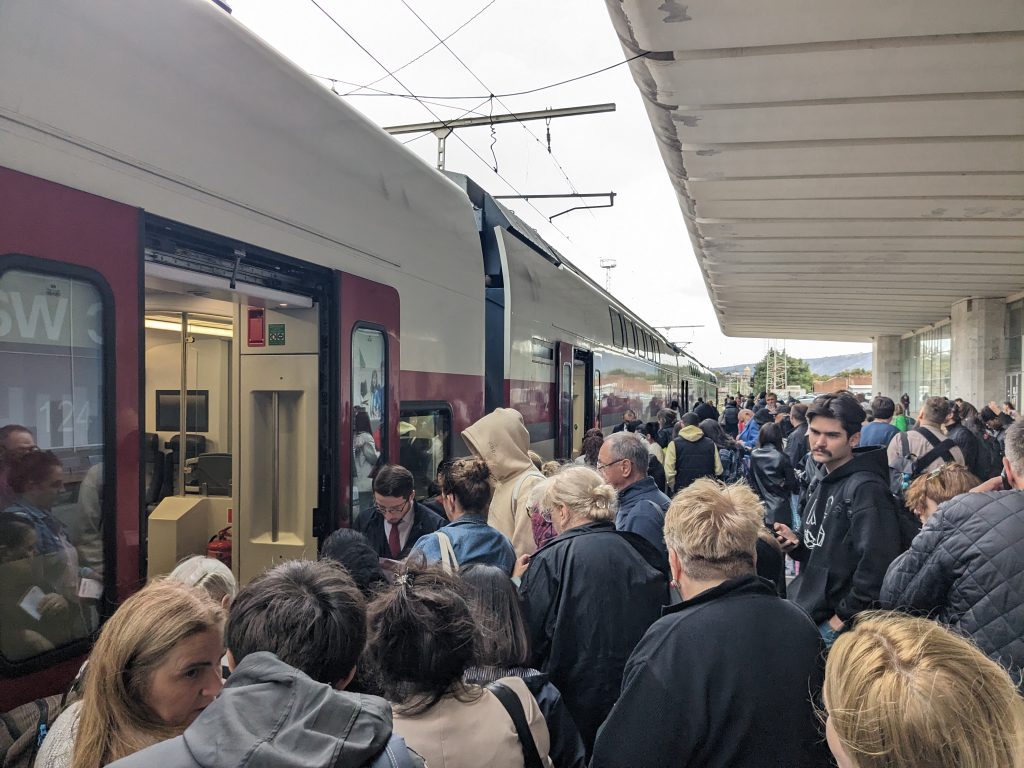
A crowd waiting to board a Stadler train. You can make out he staff checking in red ties by both sets of doors.
Once onboard
Check earlier for photos depending on the type of train. But luggage racks will be by the door and there will be a vending machine onboard if it is a longer distance service and you need something. Onboard information screens and anncements where very hit and miss other then on Stadler services. A sheet of paper was always present in the vestibule showing the times at intermediate stations but often only in Georgian. Note that is shows both directions.
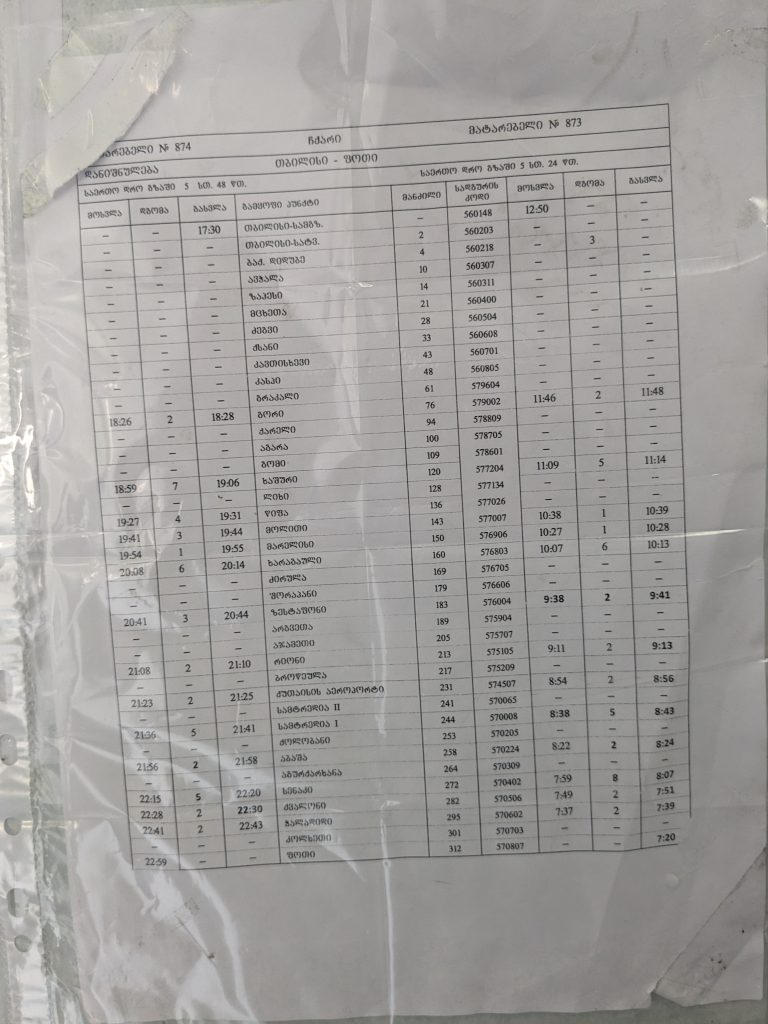
Its common for people to get out at intermediate stops and have a quick smoke break. Particularly on the Stadler services where everyone onboard is traveling a long distance.
Traveling to Kutaisi
Very few trains serve the centrally located “Kutaisi 1” station and all are slow. You are usually better off either traveling to Rioni station just to the South of the city which is served by fast trains. City bus 3 takes you regularly into the city center (upto leaving the station turn right then left up some steps – bus stop about 200m). Alternatively travel to Kutaisi international airport station which is also served by Stadler trains. A free shuttle bus runs between the airport railway station and passenger terminal to meet the arrival of all trains. There is no bus from this station nor the airport to the city center. During daylight hours you can easily take a marshrutka on the mainroad. Or use a local taxi/Bolt. Both of which are very cheap and Georgia.
And a few final random photos I didn’t get chance to include
